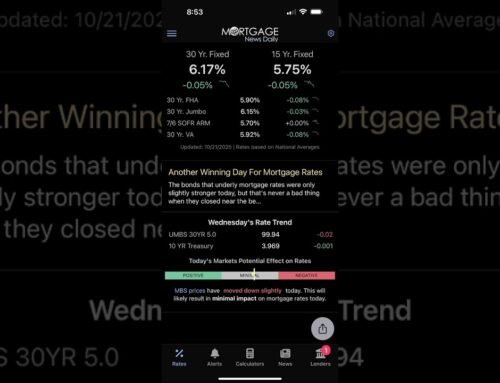

Thorleif Schjelderup-Ebbe’s important insights into pecking order in chickens, and eventually the hierarchical structure of animal societies in general, resulted from his recognition that each animal is a distinct individual. By recognizing individuals, he was able to make note of how individual chickens interacted with other individuals and with the larger group as a whole. In the one hundred years since his pioneering work, other researchers, working with a variety of animal species have shown that any group of anonymous, identical-appearing animals is actually a diverse assemblage of individuals with different personalities, including different dominance tendencies. Behavioral ecology is now an established scientific field, where scientists study things like variation in behavioral tendency, social phenotypes and fitness outcomes. This robust field of science exists because a ten-year-old kid paid attention to his chickens. Thanks, Thorleif!
In the over-one-hundred-years of research since Schjelderup-Ebbe’s original work, scientists have learned a lot about how animals interact in a dominance hierarchy. Here are the basics:
Chickens, and all other species of animals that live in social groups have a dominance hierarchy—a pecking order. One of the most common and more simple hierarchy structures in social animals is linear, where each individual has a clear rank from the most dominant to the most submissive. Chickens follow this type of ranking system. In a flock of chickens with both hens and roosters, there will be an alpha hen and an alpha rooster and a pecking order for hens and a separate one for the roosters.
Chicken hierarchies form through interactions between pairs of individuals, called dyads, where one chicken asserts dominance and the other submits These interactions don’t always involve actual physical fights—sometimes all that is needed to establish rank is the threat of aggression. These dyad encounters first occur when chicks are quite young. In groups of chicks, there is a pecking order by 10 weeks of age in pullets and somewhat earlier among cockerels. Once it is established, the pecking order remains fairly stable, but it can be thrown into disarray when new chickens are introduced. Rank reshuffling can also occur when something affects flock dynamics—such as the illness, death or removal of a flock member. Also, if a hen is temporarily removed from the flock for a couple of weeks, when she is reintroduced, her flock-mates treat her like a new hen. Since her removal caused changes in the pecking order, her old spot has disappeared. So, when she is reintroduced, she and her flock-mates have to work out where she belongs all over again.
A dyad challenge looks something like this: A hen who is dominant, (or maybe she is low-ranking, arrogant, and in denial), holds her head high and swaggers directly toward another hen. For some extra flair, she may also flap her wings. The challenged hen may think the challenger is all cluck and no action. In this case, the challenged hen responds to this perceived poser by putting on her “angry bird” face and pecking, chasing, or leaping at the challenger. The challenger then fights back. Or, she runs away thus cementing her status as the lower bird in this dyad.
Or, on the other hand, the challenged hen could realize from the get-go that the challenger really is one tough cookie. Then, she would confirm her subordinance by retreating, squatting, or staying motionless. After just a few interactions, or maybe only one, the dominance ranking in this dyad is a done deal.
Dyad encounters can range from relatively harmless to potentially life-threatening. Pecking, the key element in these encounters, can be mild pecks to the feet, legs, or body, escalating to severe pecks to the body in conjunction with the ripping out of feathers, all the way to hard wounding pecks to the head and comb. Wounded birds attract more pecks from other flock mates. In extreme cases, this can escalate to gang violence, cannibalism, and death.
But such violence is rare. And once established, a flock’s pecking order, which is really a string of dyads, tends to remain stable with relatively few aggressive incidents. An established pecking order means that everybody in the flock coexists peacefully. But it does not mean that everybody in the flock coexists equally. A chicken’s position in the hierarchy directly impacts her ability to access resources like food, nest boxes, and perching spots.
One June evening, I found Arlene Barred Rock sitting alone in the run after the other chickens had gone indoors to roost. Arlene was my alpha hen. She was active, inquisitive, and a member in good standing with the junta of Barred Rocks who ruled the roost. She always ran up to greet me with a friendly peck to the leg whenever I entered the coop. Now, Arlene was just sitting there on the ground. I knew something was very wrong.
I had arrived home from an out-of-town trip just before chicken bedtime and when I first saw her, I wasn’t even sure it was Arlene. For a moment I wondered if somebody had sneaked a bedraggled old hen with huge patches of missing feathers into my coop. The hen I found in the run looked like an old and exhausted version of Arlene. She didn’t seem eager to move and when she finally got up, I saw that she was walking with a profound limp—hardly putting any weight on her right foot. I scooped her up, carried her into the barn and gave her a quick physical exam.
She didn’t look like a sick bird. Her eyes were bright and clear, there was no discharge from her beak or nostrils, I didn’t see any poopy feathers around her vent that would indicate diarrhea, and there was no sign of lice or mites. A close examination of her right leg didn’t show any wounds or broken bones. Perhaps a sprain? Had she caught her leg in something and sprained it while wrenching it free?
She was definitely missing patches of feathers, though. While hens can undergo an unseasonable molt if they’re stressed, I suspected that her feathers had been yanked out. Pulled-out feathers would go along with the other thing I noticed—her comb was covered with scabs, undoubtedly due to hard pecks.
Arlene had been in a fight. The scenario that formed in my mind was that Queen Arlene had somehow become injured, and some lower ranking hen or hens decided that this would be an opportunity for them to usurp the throne.
I put Arlene in a crate. It was a tiny space, but it would keep her from using her leg for a bit. And since it was bedtime, a night’s rest followed by a reevaluation the next day seemed like the best course to follow.
The next day I kept Arlene in the crate all day, with frequent check-ins for treats, pets, and moral support. Arlene seemed fine. She was bright-eyed and eager to get out of the crate every time I took her out. But when I put her down on the floor, she walked with a severe limp.
…
https://www.randyschickenblog.com/home/2025/2/16/your-flocks-pecking-order-and-managing-pecking-order-issues
www.randyschickenblog.com
Feed Name : Randy's Chicken Blog
https://images.squarespace-cdn.com/content/v1/5b4227f2a2772c7471598744/1739755418999-3OGTHWY1X70JBXGDKEJT/Pecking+Order+Header.jpg?format=1500w#
Chicken Behavior
hashtags : #Flocks #Pecking #Order #Managing #Pecking #Order #Issues #Randys #Chicken #Blog






Leave A Comment